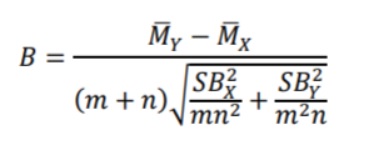What is an adaptive clinical trial?
In adaptive clinical trials, A patient may be given a new, more effective medication as an adaptive design clinical study develops.
Any design that allows for changes to a clinical trial as it progresses is known as an adaptable design clinical trial (also known as adaptive randomization).
The FDA strongly recommends this type of trial for various reasons, including increasing the chances of a patient receiving a favorable medicine.
Trials are more efficient and faster to complete, making the most use of available resources (Mahajan & Gupta, 2010), reducing trial length, and utilizing fewer subjects (FDA, 2010).
The trial’s validity (i.e., a test reliably measures what it’s supposed to) and integrity are not jeopardized by the revisions, which are based on accumulating data (the data is well managed and reflects the trial results).
Data is analyzed at each stage of the study, and a decision is made on whether to continue or end the experiment.
If the trial continues, changes to diagnostic processes, eligibility criteria, and study dose may be made.
Flexible designs are another name for adaptive trials.
While the phrases are interchangeable, “flexible design” is a more informal term that can refer to a larger range of non-rigid designs.
An adaptive design clinical trial, on the other hand, has a very specific definition.
An adaptive design clinical trial, according to the FDA, is:
“…a study that includes a prospectively planned opportunity for modification of one or more specified aspects of the study design and hypotheses based on analysis of data (usually interim data) from subjects in the study” (FDA, 2010).
Any modifications must be made before the trial data is analyzed, which is what adaptive planning means.
Furthermore, adjustments must be made based on the data itself, rather than from an external source.
For example, the results of a different trial could show that medicine is ineffective.
Changing a trial based on this fact alone does not make it “adaptive,” though adaptive designs do occasionally include data from within the trial and from outside sources.
Clinical Trial Rules for Adaptive Clinical Trial
A clinical trial with an adaptive design features one or more “rules” that govern how the study is run (Krams et. al, 2006).
Different rules apply to different adaptive design subsets.
Adaptive allocation, sample size re-evaluation, and group sequential, for example, have various rules:
The allocation rule describes how participants are assigned to various treatments.
Only an allocation rule is used in adaptive allocation designs.
The experiment is modified at the conclusion of each stage to ensure that the greatest number of patients receive the beneficial treatment.
The number of individuals sampled at each stage is determined by the sampling rule.
Only the sampling rule is used in sample size re-assessment designs.
To obtain the appropriate statistical power, these designs change the sample size as the trial advances.
A study’s statistical power (also known as sensitivity) indicates how probable it is to discern a genuine effect from one caused by chance.
What will cause the trial to be stopped under the stopping rule? (for example, an ineffective treatment).
Only the stopping rule is used in group sequential designs.
Any rules included in the study that do not fall into one of the preceding three categories are called decision rules.
Why we need a null hypothesis test? »
Advantages and Drawbacks
Adaptive designs, according to Chow and Chang (2008), provide various advantages over traditional designs, which are “fixed” from the start.
The approach is ethical since it allows for the partial termination of a trial for inefficient or toxic treatments.
Patients can also be directed to more beneficial therapy in the same way.
The design is more in line with the “real world” of medicine, as people continue to enroll in more promising studies and stop participating in trials that are useless.
Trials are more productive. An effective trial makes the most of materials, time, and effort.
Adaptive design, on the other hand, has some significant drawbacks:
Following the adjustments, p-values and confidence intervals relating to the treatment effect may become erroneous.
The changed trial could be substantially different from the one that was initially planned; the original study question could be answered incorrectly, if at all.



